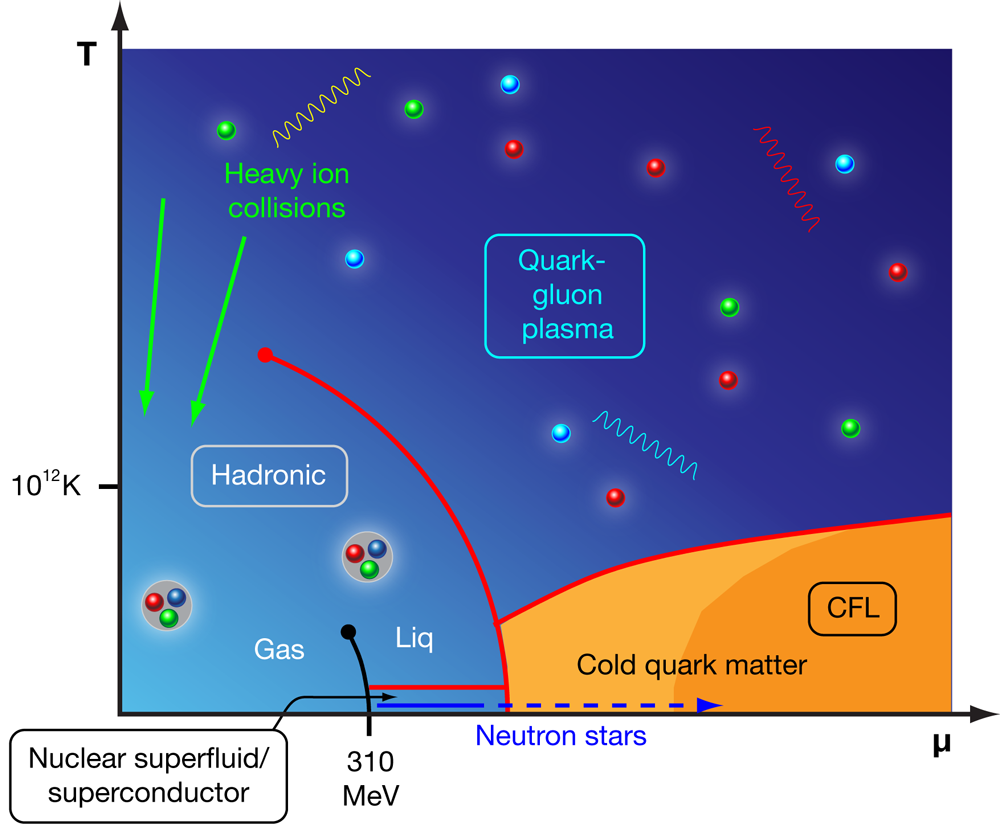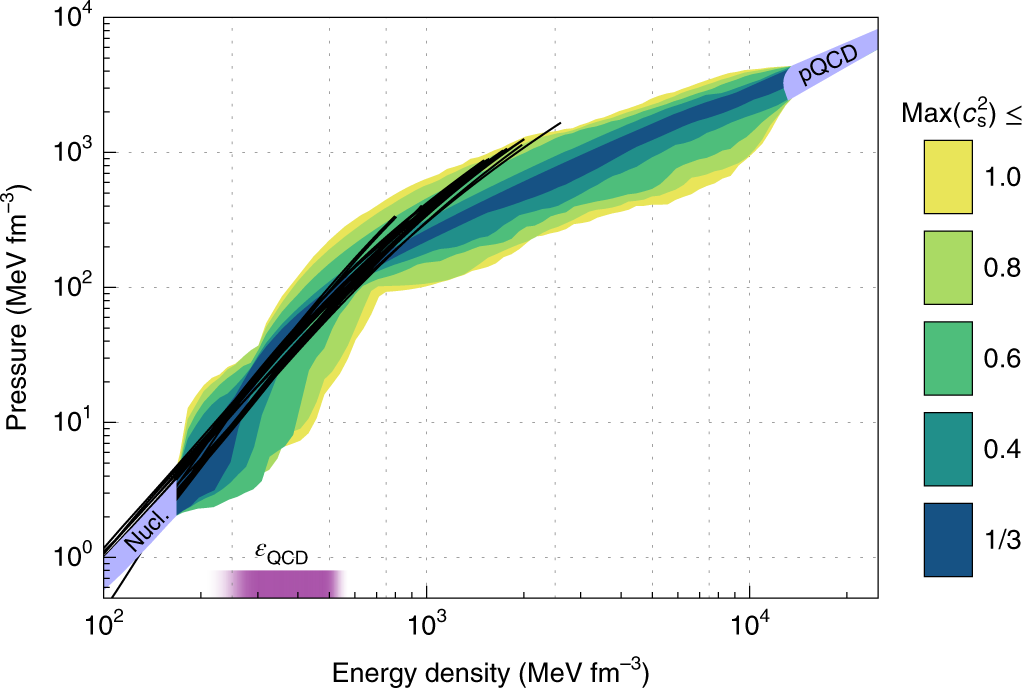

3 we consider the equation of state of/3-stable quark matter in neutron stars. We find that each of these EoSs exhibits an interval in ϵ where γ 130 MeV fm −3, corresponding to a relative discontinuity of (Δ ϵ) lat/ ϵ > 0. Strange matter is stable at zero pressure if its energy density per baryon density is lower than the energy per baryon of 56 Fe, while the two-flavor quark matter must be unstable (i.e., its energy per baryon has to be larger than 930 MeV). normal quark matter and quark matter with neutral and charged pion condensate in the SU(2) effective chiral model.

If the conformal bound \(\) exceeds 0.7, we find a small class of EoSs where even maximally massive stars do not contain quark cores according to our criterion. For the heaviest reliably observed neutron stars 5, 6 with mass M ≈ 2 M ⊙, the presence of quark matter is found to be linked to the behaviour of the speed of sound c s in strongly interacting matter. However, the matter in the interior of maximally massive stable neutron stars exhibits characteristics of the deconfined phase, which we interpret as evidence for the presence of quark-matter cores. The energy density of normal nuclear matter. By combining astrophysical observations and theoretical ab initio calculations in a model-independent way, we find that the inferred properties of matter in the cores of neutron stars with mass corresponding to 1.4 solar masses ( M ⊙) are compatible with nuclear model calculations. B Muller, The physics of the quark-gluon plasma (Springer, Berlin, 1985) 2a. Matter at high density and low temperature is expected to be a color superconductor, which is a degenerate Fermi gas of quarks with a condensate of Cooper pairs near the Fermi surface that induces color Meissner effects. Accurate knowledge of the thermodynamic properties of zero-temperature, high-density quark matter plays an integral role in attempts to constrain the behavior of the dense QCD matter found inside neutron-star cores, irrespective of the phase realized inside the stars. Although this has been observed in ultrarelativistic heavy-ion collisions 2, 3, it is currently an open question whether quark matter exists inside neutron stars 4. The theory governing the strong nuclear force-quantum chromodynamics-predicts that at sufficiently high energy densities, hadronic nuclear matter undergoes a deconfinement transition to a new phase of quarks and gluons 1.


 0 kommentar(er)
0 kommentar(er)
